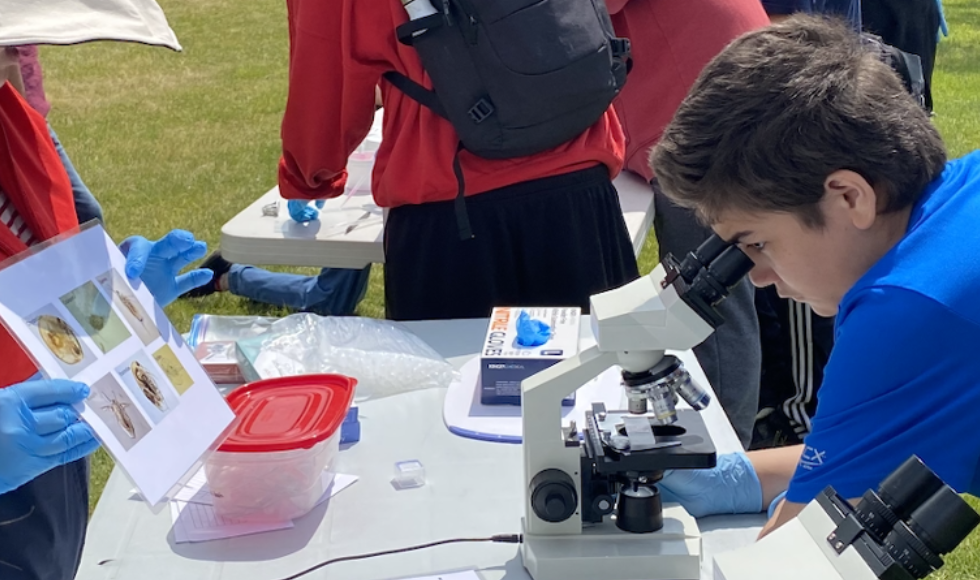Fishing for Science: McMaster students empower Hamilton youth to study water science and remediation

McMaster University students demonstrating fish capture techniques for Hamilton youth. These techniques are used to study the round goby, an invasive species commonly found in Hamilton Harbour since the early 2000s.
This month, more than 100 Hamilton students from grades 7 and 8 participated in a unique immersive and hands-on learning experience at Pier 4 Park, learning how McMaster researchers study the dual impacts of pollution and invasive species in Hamilton Harbour.
The students tested water quality, tried out research fish capture techniques, and learned how some fish species can thrive in the face of pollution.

The event was the conclusion of this year’s Fishing for Science youth outreach program, a year-long initiative created to engage with and inspire youth to care about and conserve water habitats while promoting scientific literacy.
Fishing for Science was developed in 2017 in collaboration with Let’s Talk Science, a national science outreach organization, and the Aquatic Ecology Laboratory (ABEL) based in McMaster’s Department of Psychology, Neuroscience and Behaviour (PNB).
“This program is important because youth are not just learning about water science. They’re also learning about what being a ‘scientist’ can look like,” says ABEL head Sigal Balshine, a professor in PNB.
Decisions that youth make as early as Grade 9 can determine whether or not they will pursue a career in science, notes Portia Kalun, a recent doctoral student from PNB.
“We hope to show youth that science is an exciting and viable option for them.”
Fishing for Science has progressively expanded its impact since its inception. Supported by the NSERC PromoScience program, the initiative has successfully engaged more than 500 students from six Hamilton schools.
This year’s program was led by Kalun and Ryan Hodgson, in collaboration with ABEL.
This program is just one example of how education and outreach can help create a more sustainable future, they say.
By instilling a passion for environmental research and science conservation, students from McMaster are nurturing a generation of environmentally conscious citizens who possess the knowledge and drive to restore and protect vital ecosystems in their community and beyond.
About Hamilton harbour
Hamilton Harbour, a large bay at the western end of Lake Ontario, is one of the busiest ports in the Great Lakes and the historical and an economic engine for Hamilton.
Historic conversion of natural lands to industrial, associated contaminated sediments, road runoff and nutrients from sewage have all led to significant reduction in aquatic wildlife habitat, poor water quality and a loss of biodiversity in the harbour.
Because of this, it was designated an Area of Concern by the International Joint Commission in 1987.
Despite remediation efforts since then, continued human population growth, sewage overflow and the emergence of new aquatic invasive species all continue to place serious anthropogenic stress on the harbour’s ecosystem.

